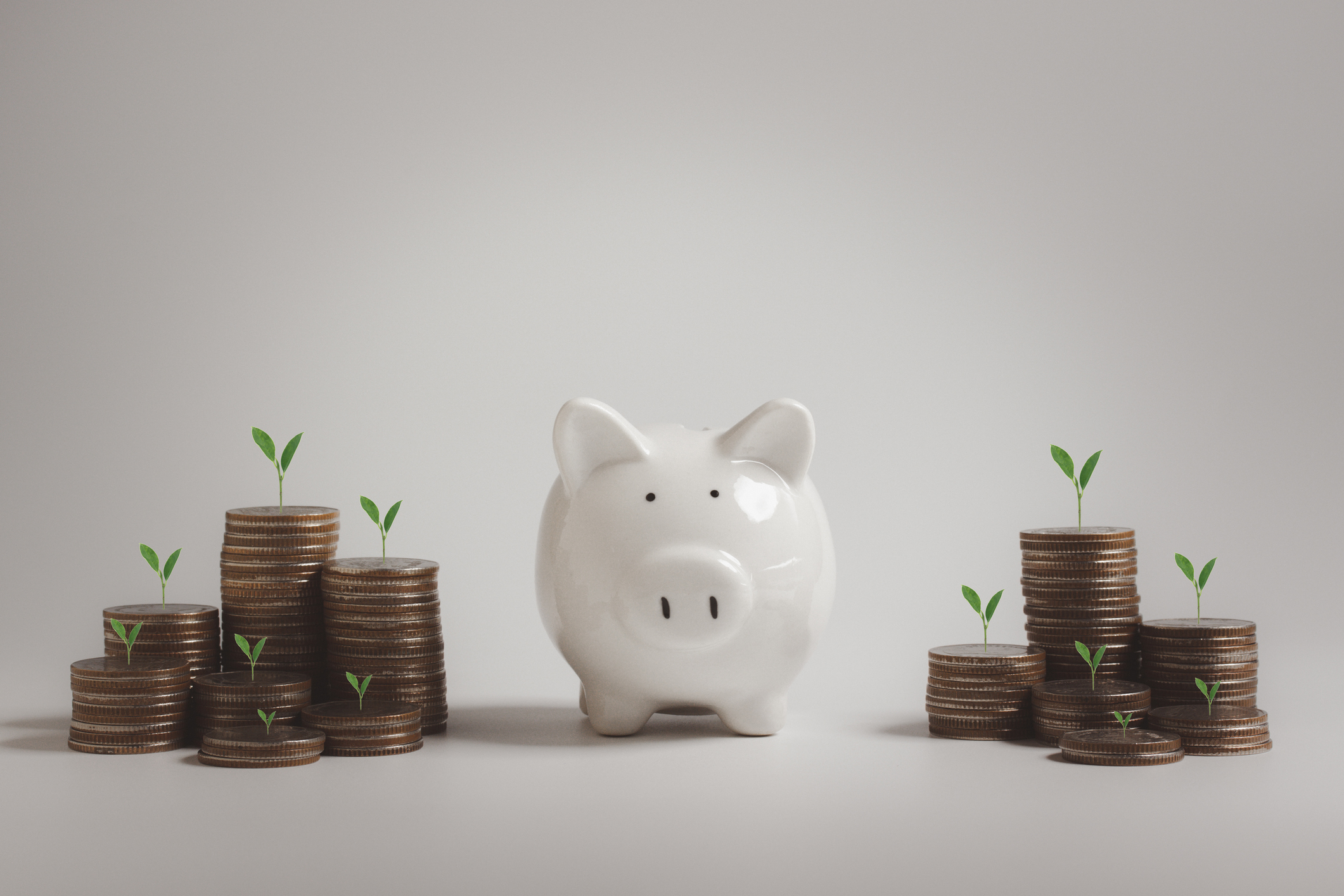Saving for retirement: ISAs vs. SIPPs
SIPPs offer more generous tax breaks overall, but ISAs are more flexible. So, which is better for your retirement?


The cost of retiring is on the rise, making it more important to set money aside for your golden years in the most tax-efficient and effective way.
With the cost of a comfortable retirement hitting £43,900 per year, according to the Pensions and Lifetime Savings Association (PLSA), it may be tempting to focus on your pension so you can fund your golden years.
But you may also have other financial goals and milestones to put money away for before you can even take money from your pot and retire such as buying a property so access may be important.
Subscribe to MoneyWeek
Subscribe to MoneyWeek today and get your first six magazine issues absolutely FREE

Sign up to Money Morning
Don't miss the latest investment and personal finances news, market analysis, plus money-saving tips with our free twice-daily newsletter
Don't miss the latest investment and personal finances news, market analysis, plus money-saving tips with our free twice-daily newsletter
Some of these differences may have levelled out a bit since pension freedom rules introduced in 2015 provided more choices on how people access their retirement pot, but there are still differences to consider.
"ISAs and pensions have different purposes and different rules," says Ed Monk, associate director at Fidelity International.
"Perhaps the most significant is that money held in pensions is not usually available until you reach the minimum pension age - currently 55 but rising to 57 in 2028. Money in ISAs, on the other hand, can be accessed at any age. That difference alone will determine for a lot of people where they store their money."
But it may not be as straightforward a choice for everyone, especially as pensions are set to become part of an estate for inheritance tax purposes from April 2027.
Plus, chancellor Rachel Reeves is rumoured to be considering cutting the ISA allowance at least for cash savings, impacting how much you can save without putting more money in the stock market.
So which is the best option?
SIPPs beat ISAs on tax
Both products provide tax wrappers that shelter your contributions and returns from the taxman. There are minor differences between the two though.
For example, dividends from US stocks are tax-free in a SIPP - if your administrator supports this - but they will have 15% tax deducted by the US government if held in an ISA. However, the impact of these quirks is small for most investors.
The main difference in tax treatment lies in how you are taxed on contributions and withdrawals.
Pension contributions benefit from tax relief at your marginal income tax rate, but you eventually will be taxed on the income you draw. However, you can also take out 25% of your pension fund as a tax-free lump sum which is where pensions score highly over ISAs.
With an ISA, you are putting in money that you have already paid tax on, you won't receive tax relief on contributions but there are no tax withdrawals.
"For this reason, many people use ISAs as a supplementary form of retirement income to a pension, to minimise their income tax bills after they stop work," says Becky O’Connor, director of public affairs at PensionBee.
Pension tax relief can make a big difference to the final total of your retirement pot as it boosts how much you are putting to work in the stock market, compared with ISAs where gains are tax-free but your contributions have already been taxed.
“Investment compounding makes upfront tax relief extremely powerful as extra pension payments have time to snowball over time, giving your investments a powerful boost," says Alice Guy, head of pensions and savings at interactive investor.
"Even though you pay income tax later on, you still end up with more because that extra tax boost has grown by far more than the tax you end up paying. In addition, you get to draw 25% tax-free from your pension pot, meaning that most people pay slightly more tax overall on ISA investing."
Research by interactive investor shows that using a pension rather than an ISA could result in an extra £6,000 of annual income in retirement, due to the pension tax relief boost.
This assumes someone earning £60,000 invests 5% of their income in a pension or invests the same amount, minus tax at their marginal rate into their ISA.
The table below then assumes a 5% investment growth net of fees, a 4% withdrawal rate, basic rate income tax and 25% of tax-free withdrawals for a pension. It shows a £5,939 difference when investing through a SIPP, compared with an ISA, over 40 years.
| Header Cell - Column 0 | £60,000 salary with a pension | £60,000 salary with an ISA |
|---|---|---|
Starting monthly contribution | £250 | £150 |
Investment wealth after 40 years | £593,957 | £356,396 |
Potential yearly income | £20,195 | £14,256 |
How much can you save in ISAs vs. SIPPs?
With a SIPP, you can contribute up to £60,000 in the current tax year and get tax relief at your marginal rate. But you can't contribute more in any tax year than you've earned so if you earn £20,000, you can only contribute £20,000 (including the tax relief).
This applies across all your pensions, so if you pay £10,000 into a workplace pension for example, you can only pay up to £30,000 into your SIPP. However, everybody can get 20% tax relief on contributions of up to £2,880, even if you have no earnings (so you can set up a pension for a child or grandchild, for example).
Pension funds were previously subject to a 'lifetime allowance' of £1.25 million, but this was scrapped from the start of the tax year in April 2024.
In contrast to SIPPs, you can put up to £20,000 in an ISA each tax year. The government is also consulting on creating a separate ISA allowance to fund a British ISA. There are also differences in what you can put in the tax wrappers.
With ISAs, you have more options. You can choose between a lifetime ISA, cash ISA, and a stocks and shares ISA. There is a separate £9,000 allowance to save tax-free for your child using a junior ISA. But a SIPP may support more assets such as commercial property, depending on the investment platform you use.
"Investment choice is generally speaking roughly the same," adds O'Connor. "Some providers offer ready-made portfolios or plans, to take too much choice away from those who don’t want it, for both ISAs and SIPPs."
The type of investments you choose for each may depend partly on when you plan to access them, O'Connor says.
"Generally speaking, funds with a higher proportion of equities offer the prospect of higher growth, but are also potentially more volatile," she adds.
"So in either ISAs or SIPPs, equity-focused funds tend to be more appropriate if you are ten or more years away from needing the money.
"As you approach the point you might need the money in your ISA or your SIPP, it might make sense to reduce equity exposure to avoid any drops in performance that might affect your plans.”
When can you access ISAs and SIPPs?
One of the big differences between an ISA and a SIPP is when you can access it.
An ISA can be accessed at any point, but you can only start making pension withdrawals from age 55 – rising to 57 from April 2028.
There is no tax on ISA withdrawals but you may have to pay income tax when taking money out of a pension, beyond taking 25% tax-free cash.
It is easy to take money from your ISA as you just make withdrawals through your investment platform. With a SIPP, you have to choose between staying invested, entering drawdown or purchasing an annuity.
These choices can have an impact on your retirement and – as with an ISA – it is important to plan to ensure the funds don't run out too soon. You can also plan withdrawals to keep your tax bill down.
"ISAs have big advantages when it comes to flexibility as you can withdraw funds at any point," adds Guy.
"This flexibility is extremely valuable, especially for self-employed workers, who often need to keep a big cash buffer as their income is not predictable.
"ISAs are also great for medium-term saving goals like home improvements or university costs, as you know you can withdraw funds when you need them, with no restrictions or extra tax to pay."
The inheritance tax conundrum
Pensions used to have an extra tax perk that kept the pot separate from someone’s estate for inheritance tax when they die.
But Reeves announced plans in her autumn Budget to remove this and include pensions in the value of an estate, potentially pushing up inheritance tax bills.
This adds an extra element to retirement and inheritance planning.
No-one knows when they will die but most people would rather spend the money on themselves or their loved ones than to have to give it to the taxman.
Jonathan Halberda, specialist financial adviser at Wesleyan Financial Services, said: “Many are choosing to accelerate pension withdrawals, transfer funds into alternative structures, and seek guidance on gifting and trust planning in an effort to minimise potential inheritance exposure."
ISAs vs. SIPPs: where to start
Financial experts would suggest a mix of ISAs and SIPPs as both have different goals.
We have analysed the best ISA and SIPP platforms to help you choose and some may even pay cashback.
Your pension savings will be inaccessible until you are 55 at the earliest and there is every chance the rules could change again before you retire. This political risk is probably the biggest drawback to SIPPs. They are also usually a bit more expensive than ISAs, which will steadily eat into the tax gain.
So, some say it usually makes sense to focus on using up your ISA allowance before contributing to a SIPP, especially for younger investors. You lose a tax break, but gain flexibility and take less of a gamble on the tax system changing in the next 20-30 years.
For higher-rate taxpayers who are nearer retirement and already have significant ISA savings, the balance may tip in favour of SIPPs. But Monk warns it is also important to consider if you will end up paying more tax on pension withdrawals than you had done during your working life.
Pensions may seem the most tax-efficient route on a purely financial comparison, Monk says, but you need to consider all circumstances.
"When you’ll need access to your savings is an important factor, and on that score, ISAs are far more flexible than pensions. Conversely, pensions enjoy better relief from inheritance tax."
Get the latest financial news, insights and expert analysis from our award-winning MoneyWeek team, to help you understand what really matters when it comes to your finances.

Marc Shoffman is an award-winning freelance journalist specialising in business, personal finance and property. His work has appeared in print and online publications ranging from FT Business to The Times, Mail on Sunday and the i newspaper. He also co-presents the In For A Penny financial planning podcast.
-
 Six investment funds for beginners
Six investment funds for beginnersBeginner investors can use funds to start building their portfolio, making it easy to access global trends while managing their risk level. Here’s six funds that beginner investors can consider.
-
 Farming isn't for the faint-hearted – and isn't profitable
Farming isn't for the faint-hearted – and isn't profitableOpinion Farming may look appealing, but turning a profit is extremely hard. No wonder many farmers are attracted to the Sustainable Farming Incentive, says Max King